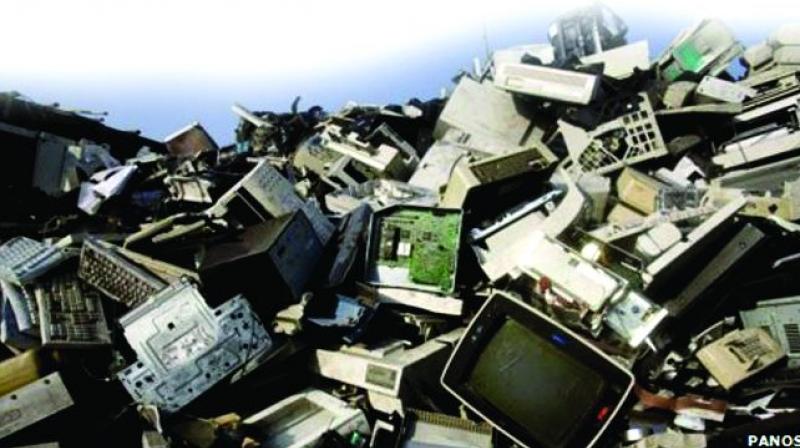Hyderabad: Most people dispose it carelessly

Hyderabad: E-waste managers say that a majority of the households in the city are guilty of irresponsible disposal of domestic e-waste. The practice in most households is to either put all the waste into the garbage bin or sell it to the local scrap dealer. Scrap dealers usually sell e-waste to informal dismantling and recycling units. Experts say that this practice can be dangerous to the environment as well as the workers involved.
The city has over 20 waste collection centres that have been approved by the Pollution Control Board. A majority of these are located near industrial zones, and they collect items from government and private workspaces, which release waste in bulk.
S. Sreenivas, a small-scale collector of e-waste in Secunderabad, says that most of his waste comes from corporates that he has tied up with. “Local households give their e-waste to the scrap dealer. They are not aware that there are centres where they can deposit their waste and get paid as well,” he says.
With increased dependence on electronic items in the household, it comes as a surprise that the municipality hasn’t set up e-waste collection centres. “The city has 25 dry waste collection centres, all the municipality has to do is set up one for e-waste. The rules mandate that an e-waste collection centre must be set up every 25 sq km. In the Swach Sarvekshan Campaign, cities are judged on this aspect,” says Major Shiva Kiran of Sukuki Exnora.
Any wastes that the informal centres can't recycle end up at the dump yard in Jawaharnagar or any other open area.
City ranks seventh
- Hyderabad ranks 7th in generation of e-waste. It produces 32,000 tonnes of waste.
- There are designated e-waste collection centres that are equipped to dispose of wastes like printed circuit boards. They can be contacted for the collection of e-wastes from households.
E-waste recycled in dangerous ways
A study conducted by Assocham-Frost & Sullivan in 2016 predicted that India’s e-waste load would touch 30 tonnes by 2018. Only two per cent of this is recycled, which begs the question what happens to the rest of it?
A major part of the recycling is done by the informal sector which adopts hazardous methods. E-waste contains plastic, metal, cables, batteries and printed circuit boards. The wastes are collected and then sent for recycling.
Mohit Kumar, the Operations Manager at Ramky, says, “Apart from PCBs or mother boards, everything else is easy to recycle.” At present, mother boards are supposed to be sent to other places to be recycled, as there is no facility for recycling them within the city. However, for informal units, motherboards are gold mines. They are burnt at high temperatures for extracting the precious metals in them. Mujeeb Quadari, the Director of Z-Environ, a dismantling company, says the process is extremely dangerous; the fumes can spread up to five km and cause lung damage.
Other items that cannot be recycled are tubelights and CFL bulbs. The white powder in tubelights contains mercury, which is supposed to be sent to a waste treatment facility. Bhadra Girish, an environment engineer sais, “India doesn't have the tech to recycle tubelights. After the white powder is removed, it is crushed and buried in landfills.”

